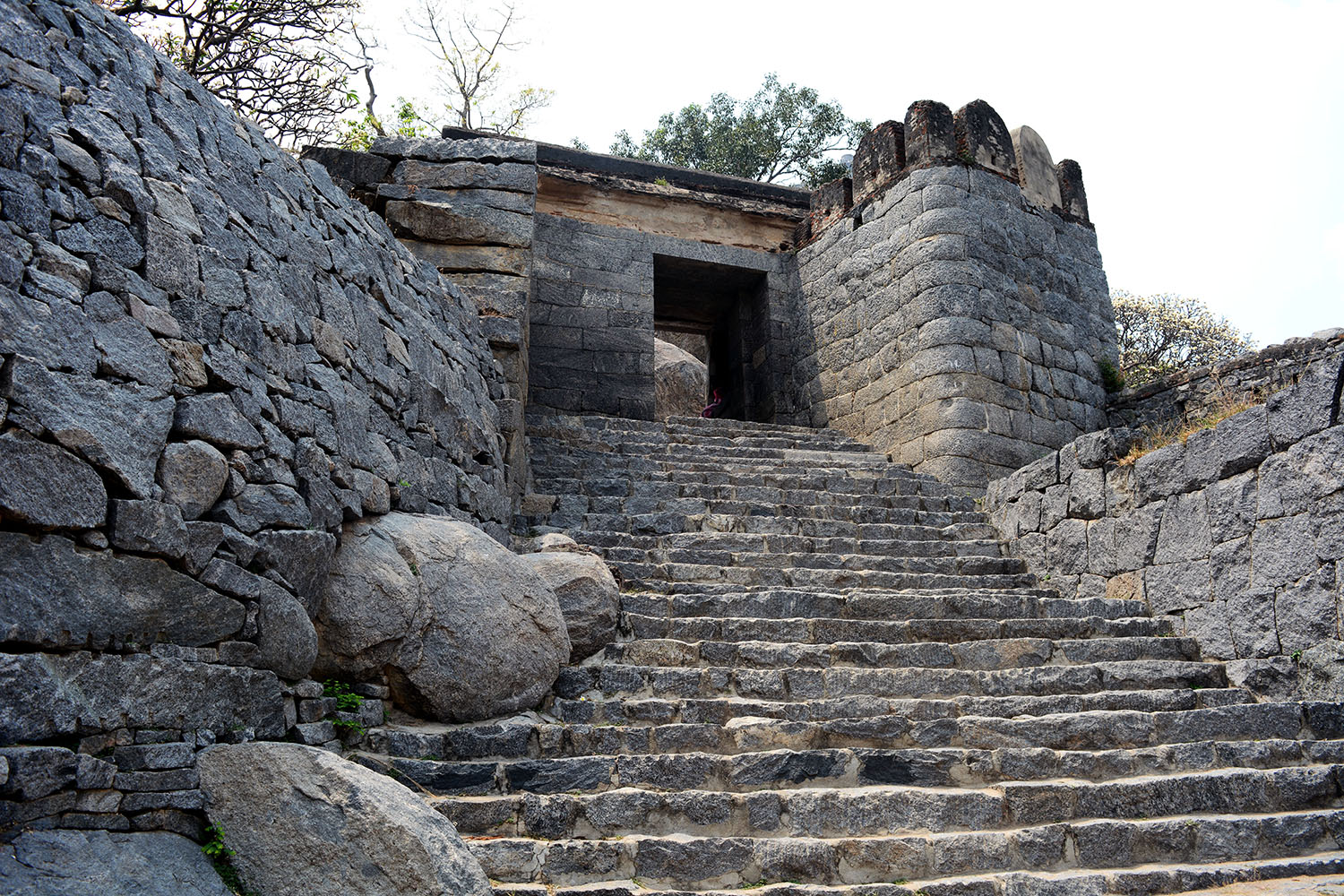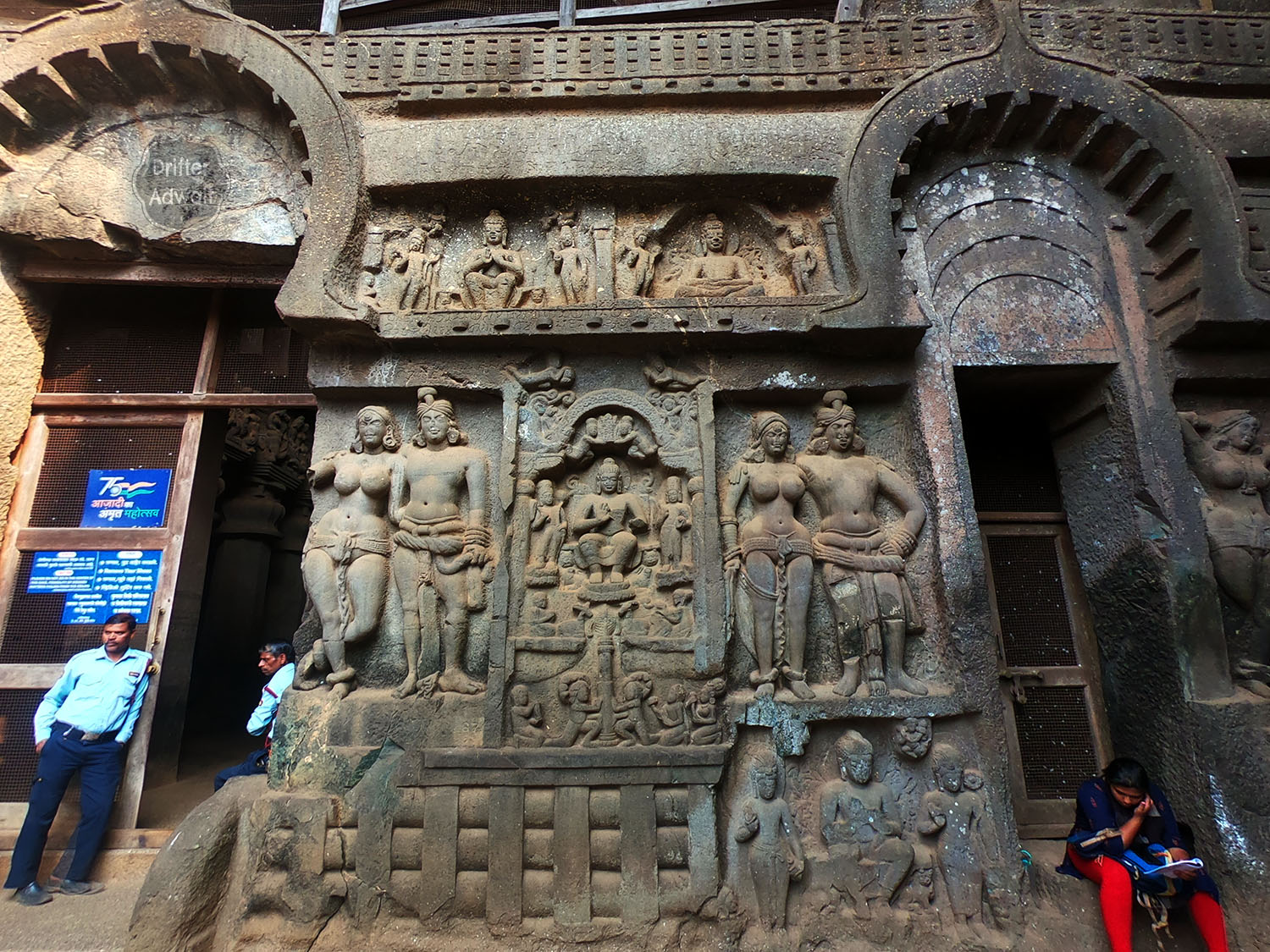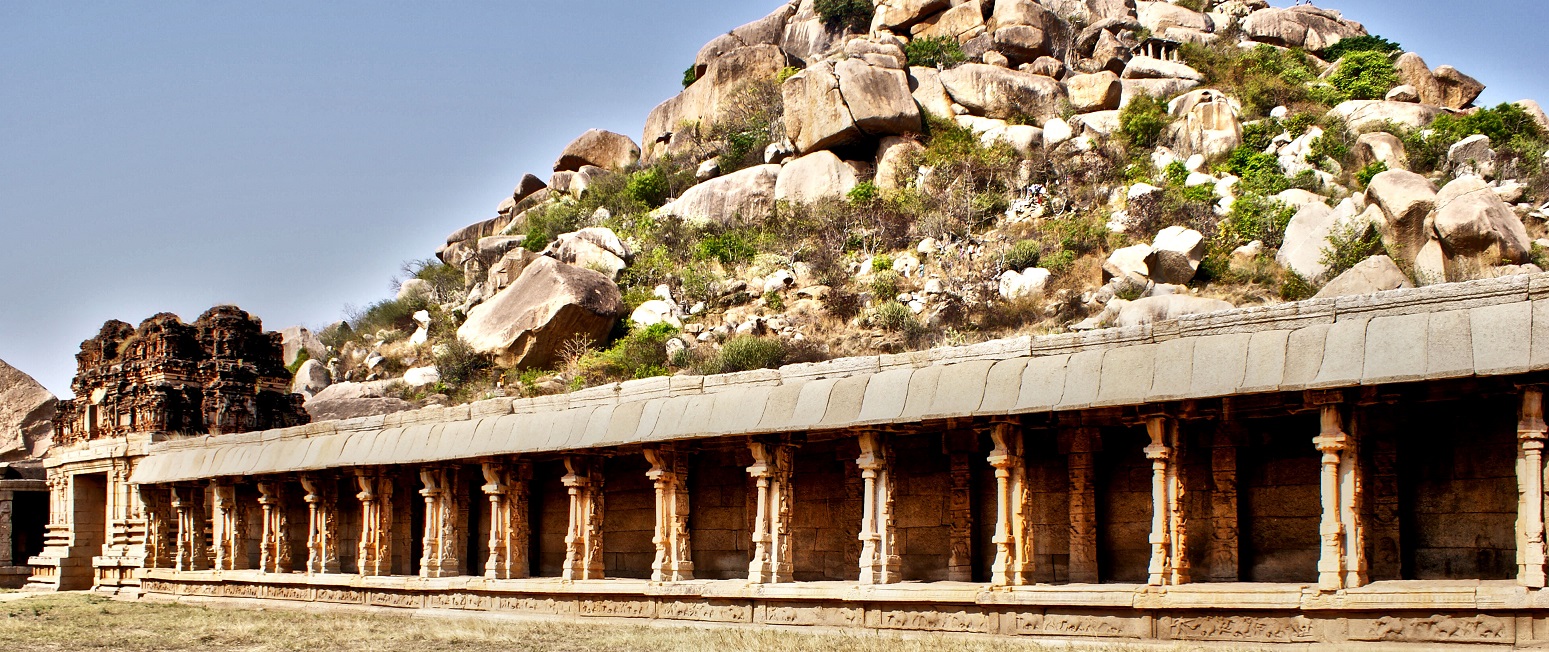Lonavala, between Mumbai and Pune, is a famous hill station flooding with tourists in all seasons. A small percentage of these tourists know the historical significance of this place, loaded with history that dates even well before the birth of Christ, for the village is home to several ancient forts and caves, underlining the rich heritage of India. One such place is Bhaja caves, located right in between the two forts of Lohagad and Visapur.
Bhaja Caves in a Nutshell

Total caves: 22
Historical Significance: Bhaja is located on the ancient trade route reaching the Arabian Sea from the Deccan plateau.
Noteworthy caves in Bhaje: Cave 12 Chaityagruha, Cave 18, and Cave 19.
Ancient Origins: Bhaja Caves are believed to have been carved out of the rock from the 2nd century BCE to the 2nd century CE, making them over 2,000 years old. They have witnessed the rise and fall of empires and the passage of time.
Buddhist Influence: The caves were initially used by Buddhist monks as a place of meditation and retreat. They served as viharas (monastic complexes) where monks could seek solace and engage in religious activities.
Rock-Cut Architecture: Bhaja Caves exemplify the excellence of rock-cut architecture prevalent during that era. The skilled craftsmen chiseled the hard rock to create intricate and elaborate cave structures.
Intriguing Chaitya Hall: One of the highlights of Bhaja Caves is the magnificent chaitya hall, Cave 12. This grand hall features a stunning horseshoe-shaped arch entrance and intricately carved stupas (hemispherical structures), symbolizing the presence of Buddha.
Unique Water Cisterns: The caves are known for their ingenious water management systems. They have intricate channels and cisterns carved into the rock to collect and store rainwater, providing a sustainable water supply for the monks.
Exquisite Carvings: Explore the cave walls adorned with mesmerizing sculptures and reliefs depicting various scenes from Buddhist mythology and daily life during that period. These carvings offer a glimpse into the artistic and cultural richness of the time.
Spectacular Views: Located on a hill in between Lohagad and Visapur forts, Bhaja Caves offers breathtaking views of the surrounding lush green valleys and the mesmerizing landscape. Take a moment to soak in the serenity and beauty of the surroundings.
Hiking Adventure: To reach Bhaja Caves, visitors can embark on an exciting hiking trail that winds through the scenic Sahyadri mountain range. The trek adds an adventurous element to the journey, making it a favorite among nature enthusiasts and adventure seekers.
UNESCO World Heritage Site: Bhaja Caves, along with other nearby cave complexes, have been recognized as a UNESCO World Heritage Site. This designation highlights their historical and cultural significance, elevating their importance on a global scale.
Cave 12: Chaityagruha of Bhaja Caves

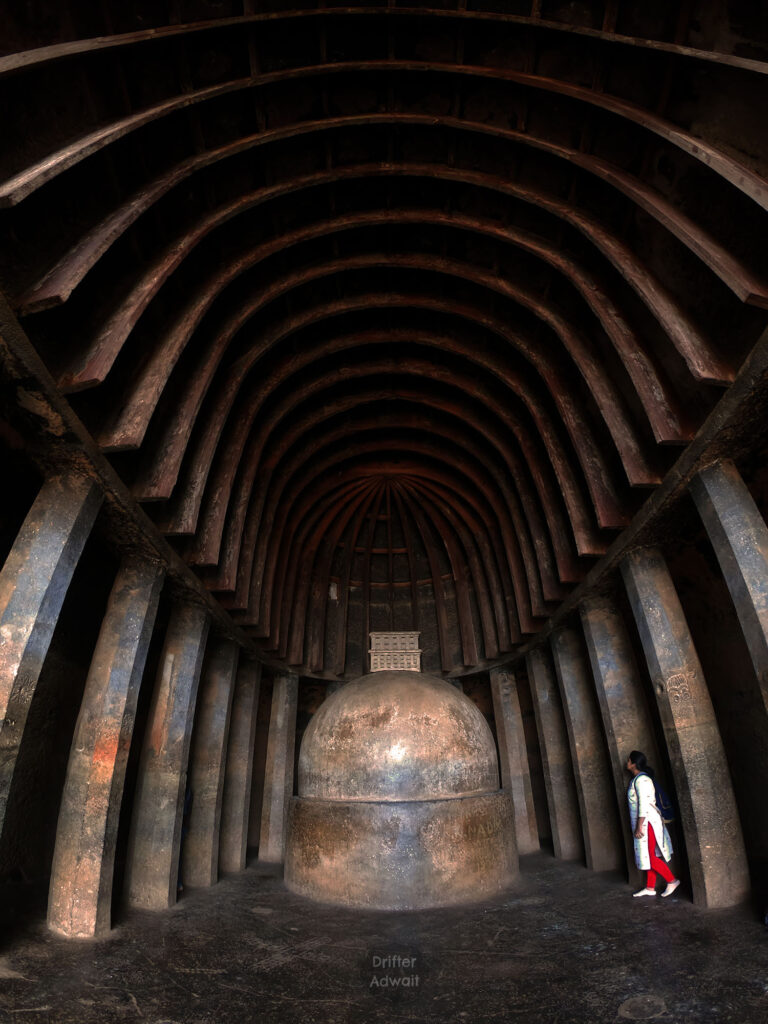
One of the earliest and biggest Chaityaguha, carved during the 2nd BCE, contains an aspherical hall and Stupa. The most prominent feature is a ceiling vaulted with horseshoe-shaped giant wooden ribs that have remained intact for the last 2200 years. The front of the Chaityagruha was decorated with the facade but is now completely destroyed.
Cave 18: The assimilation of many Dagobas under the cave is a distinctive characteristic of the cave. Each Dagoba has been donated by an individual person, and many of these Dagobas have inscriptions at their bottom.
Cave 19: Vihara with Carvings beside the entry door
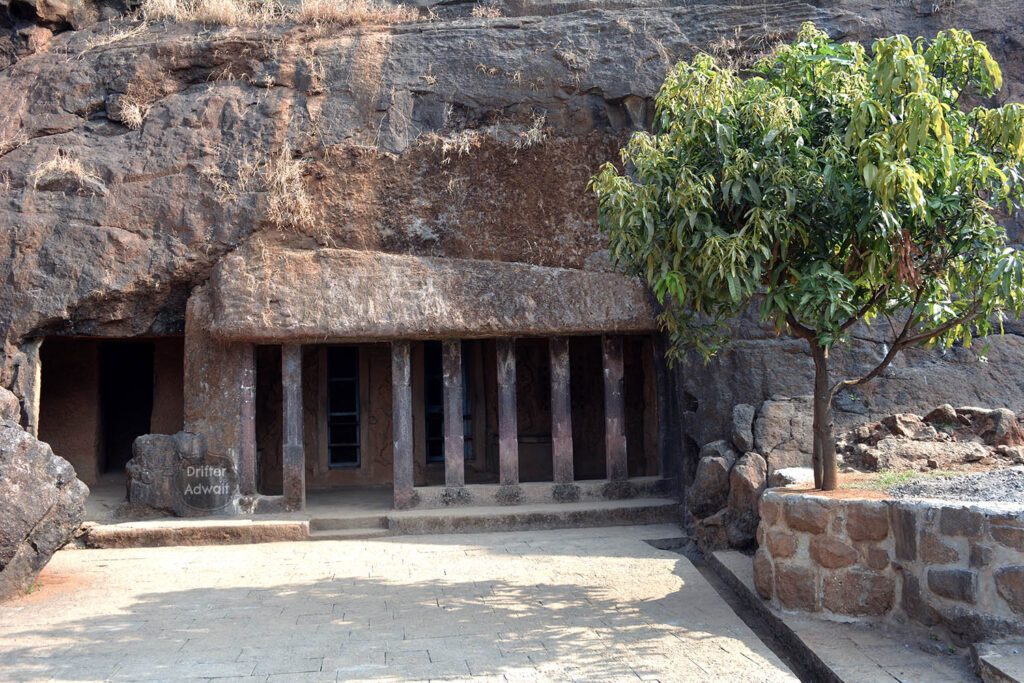


This cave is located just beside a picturesque waterfall that is also known as Surya Gumpha. You will see two beautiful story panels on the right door of this cave. On the left, you will see an individual riding a chariot with two women beside him. He is stampeding this chariot on some demonic figure. On the right, you will see an elephant rider, with various smaller figures performing various activities. Few historians believe that these carvings are Surya and Indra, while few believe that they represent the demon Shakra riding a chariot and Mara on an elephant.
The noteworthy thing about the sculpture is a woman figure playing the musical instrument Tabla (drums). It is believed that these instruments were brought to India by the Arab invaders. But this theory created by the leftist-Marxist historians is erased with this ancient evidence, carved 800 years well before the emergence of Islam.
Important Inscriptions in Bhaja Caves
Vihar No 6: This Vihara has been carved from a donation by Bodhi, a wife of a farmer.
Water reservoir in between Shailagruha 16 and 17: The virtuous donation of a water basin by the son of Kodrasaki, Maharathi Vinhudatta.
Vihar no 22: This Vihara has been carved with the donation given by Naath Nadasav from Bhogavati.
Bellow the Dagoba from Shailagruha 5: This Stupa belongs to the respected Sthavir Sanghadina.
Bellow Third Dagoba: This Stupa belongs to the respected Sthavir Ampikinak.
Bellow, the largest Dagoba of Shailagruha: This Stupa belongs to respected Sthavir Dhamagiri.
How to reach Bhaja caves:
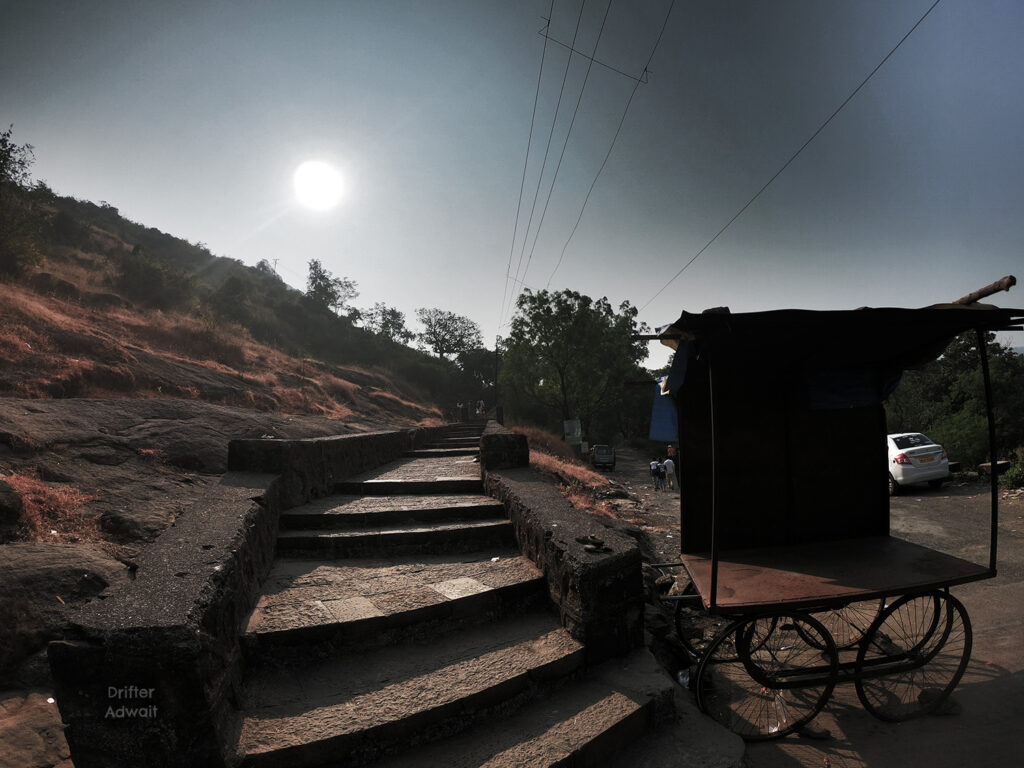
By Air: If you’re arriving by air, you can book a flight to Pune Airport, also known as Lohegaon Airport. From there, you can proceed to Bhaja Caves by road.
By Train: Pune is well-connected by train to major cities in India. You can take a train to Pune Junction Railway Station. From the railway station, you have several options to reach Bhaja Caves. You can take a local train from Pune to Lonavala and alight at Malavali station. Bhaja Caves is about 2.5 KMs from the Malavali station.
By Road: From Pune, you can hire a taxi or take a bus to reach Bhaja Caves. The distance between Pune and Bhaja Caves is approximately 60 kilometers, and the journey takes around 2 hours, depending on traffic conditions. If you’re driving yourself, you can take the Mumbai-Pune Expressway from Pune and exit at the Lonavala/Khandala exit. From there, follow the road signs to Bhaja Caves. The caves are situated about 12 kilometers from Lonavala, right in between the legendary Lohagad and Visapur forts.

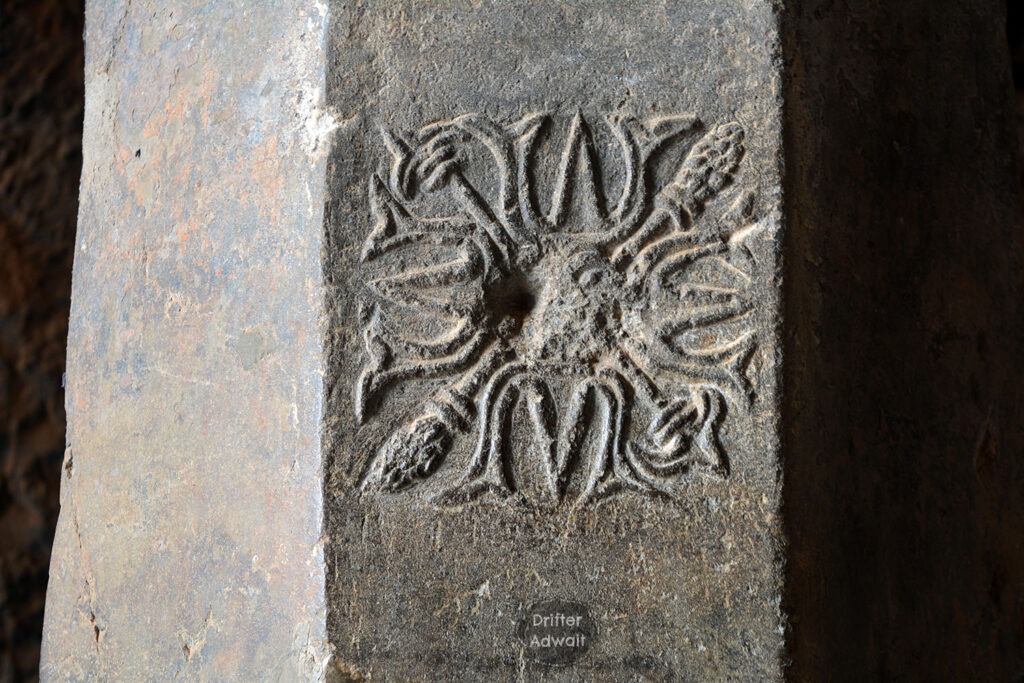
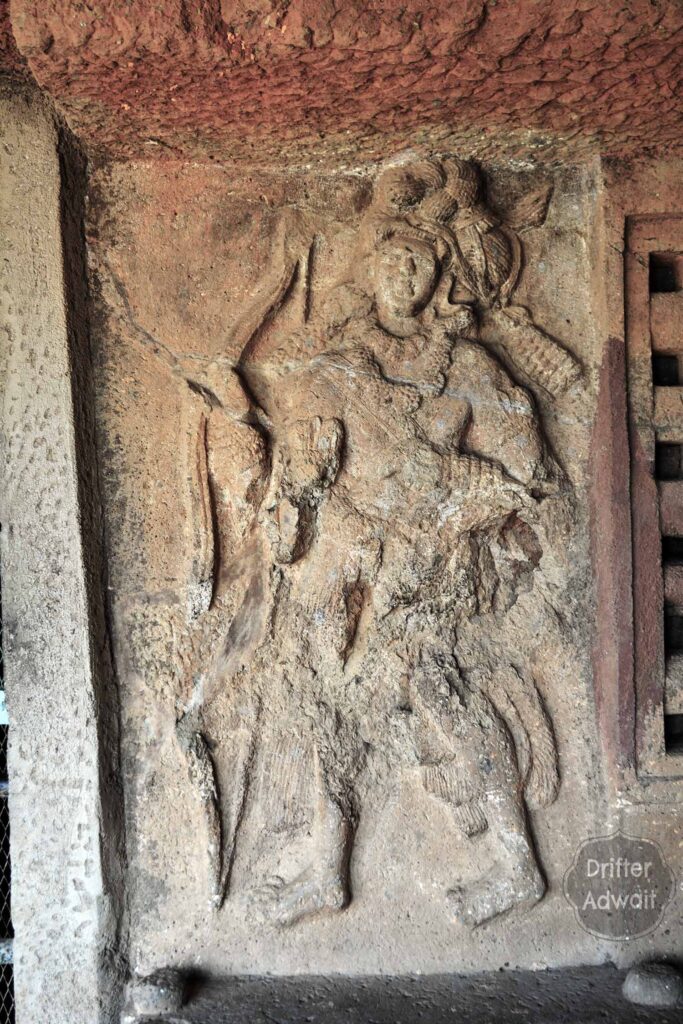
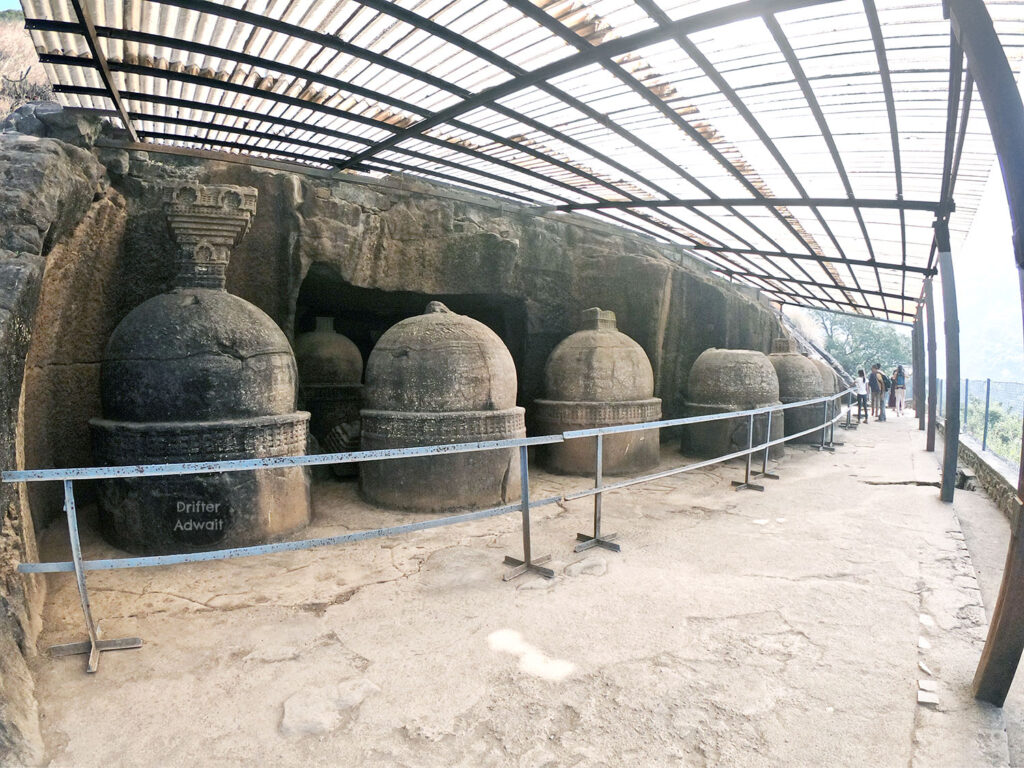
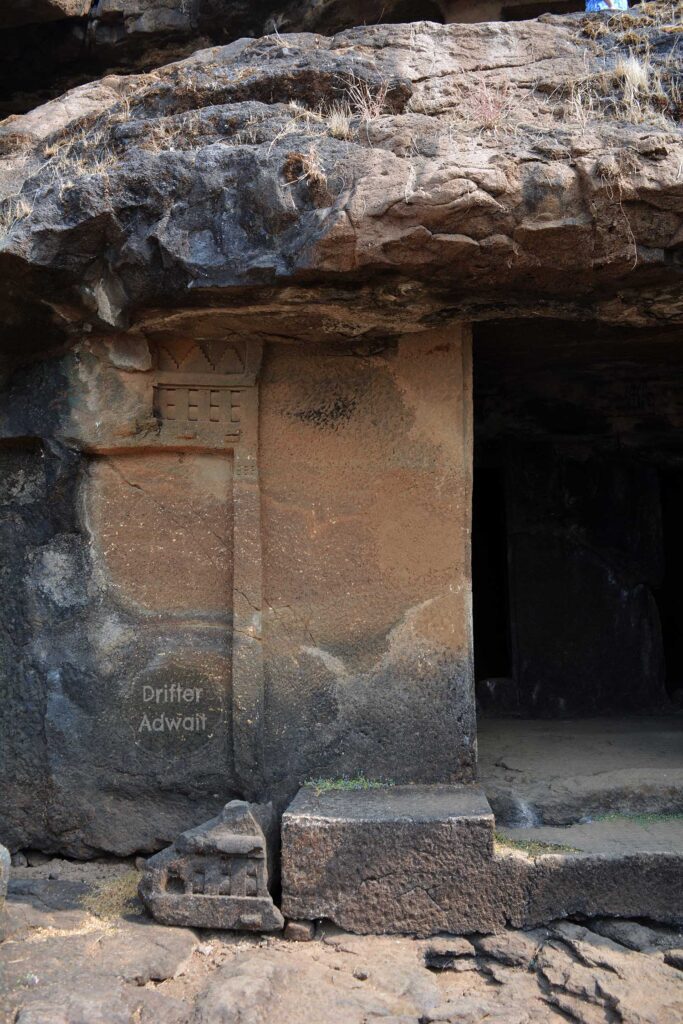
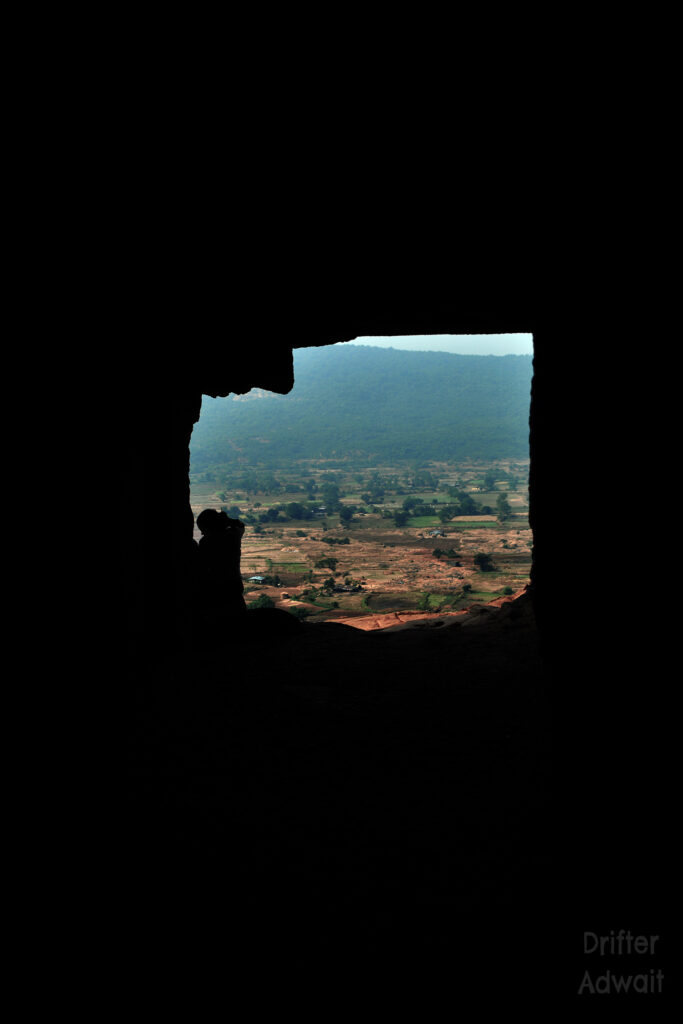

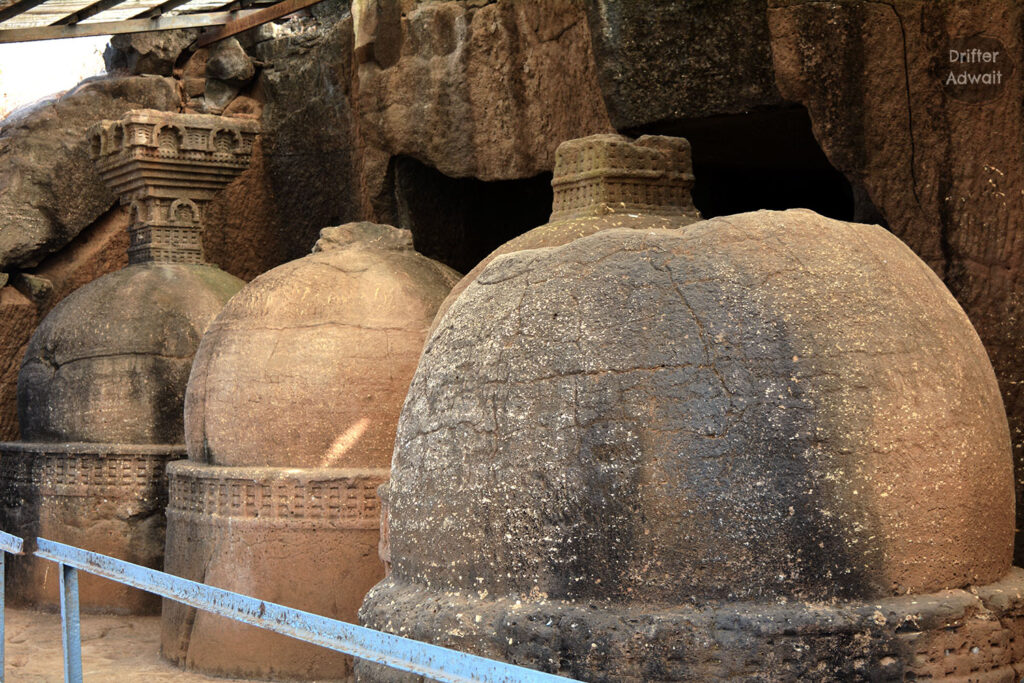
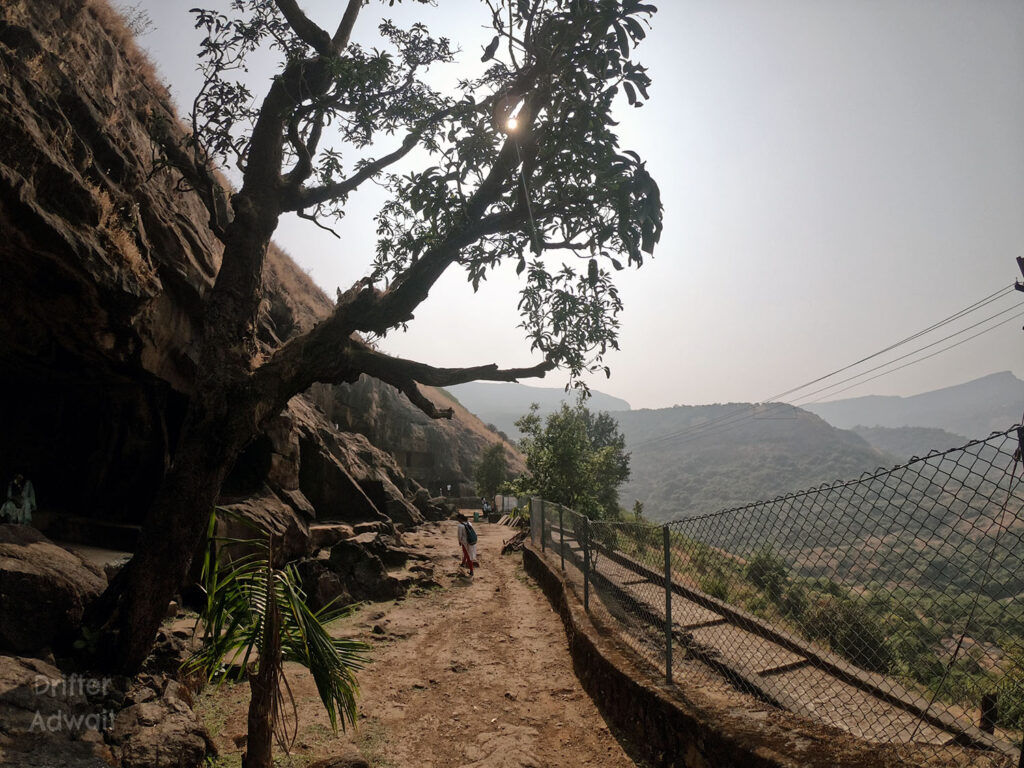
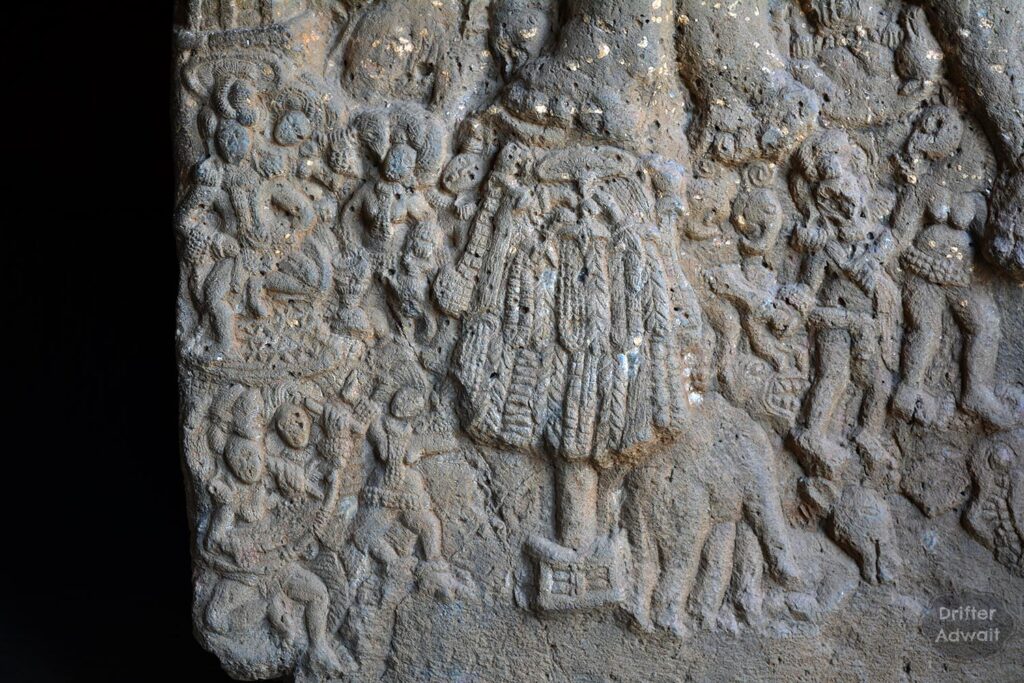
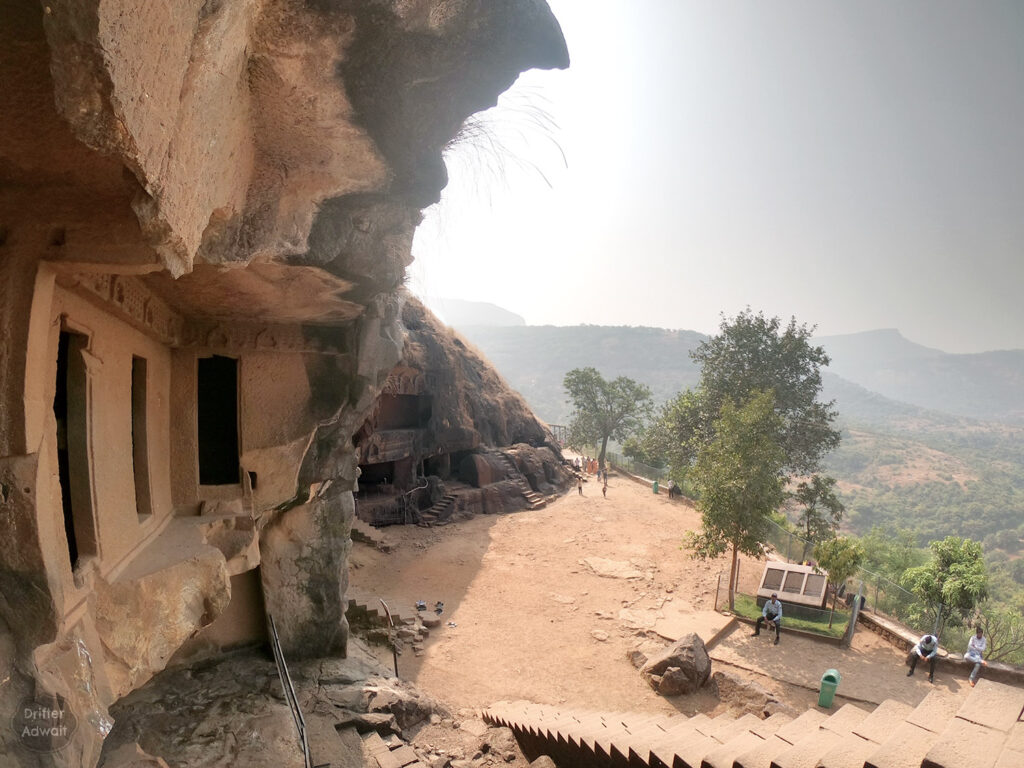

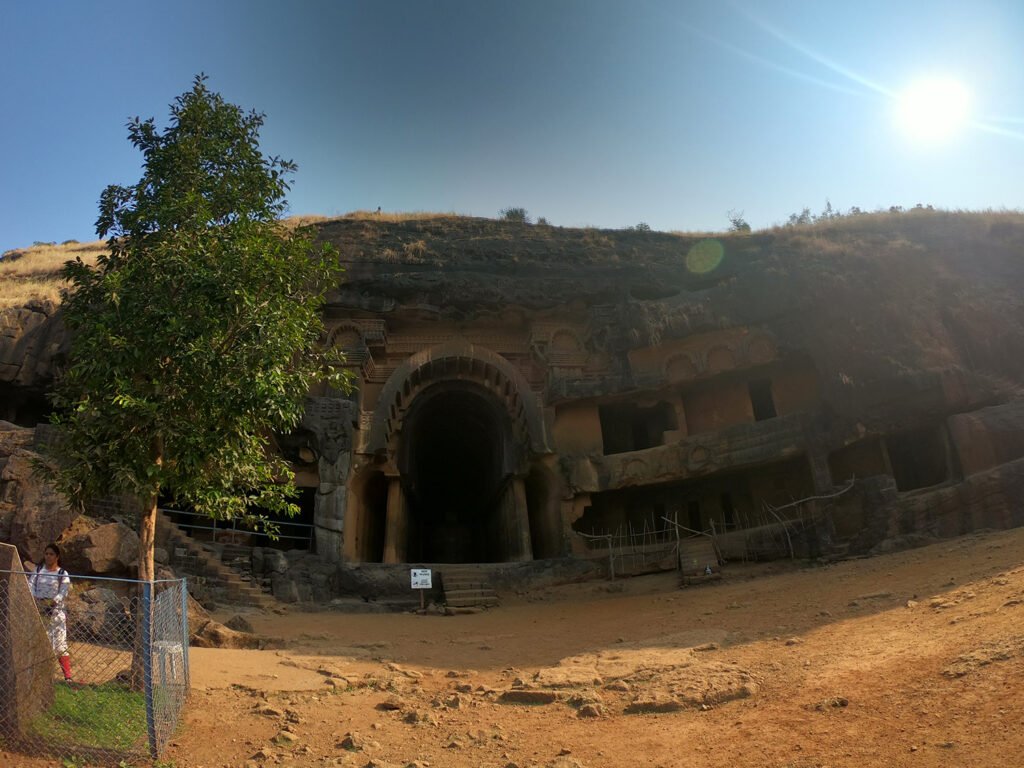
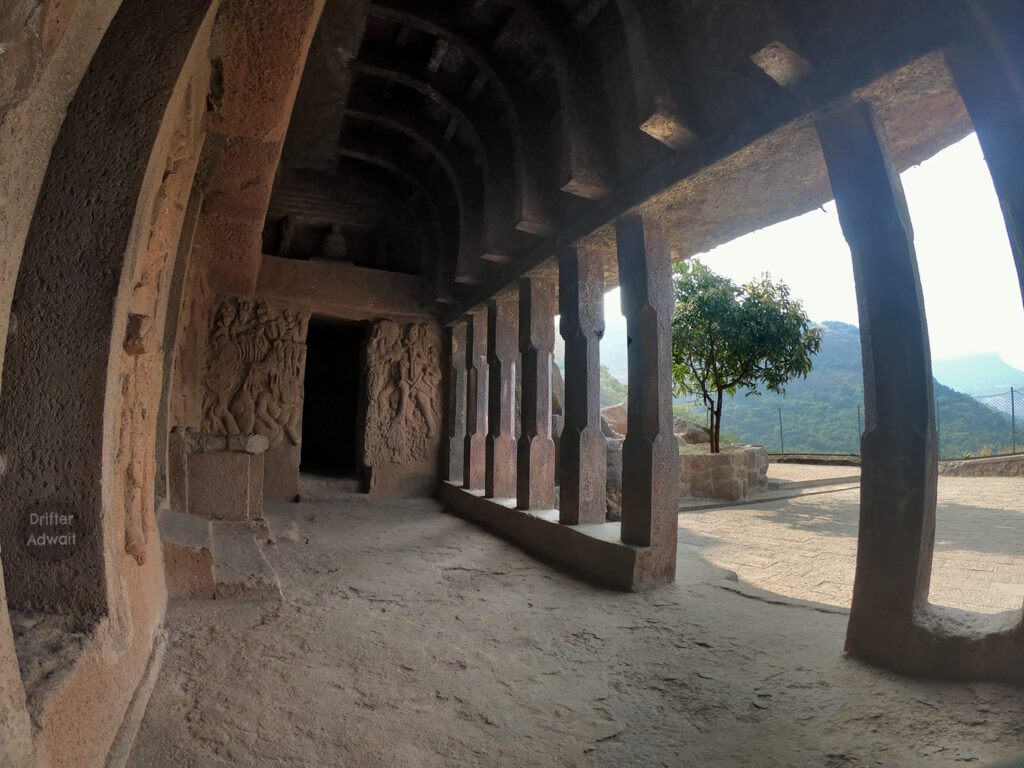

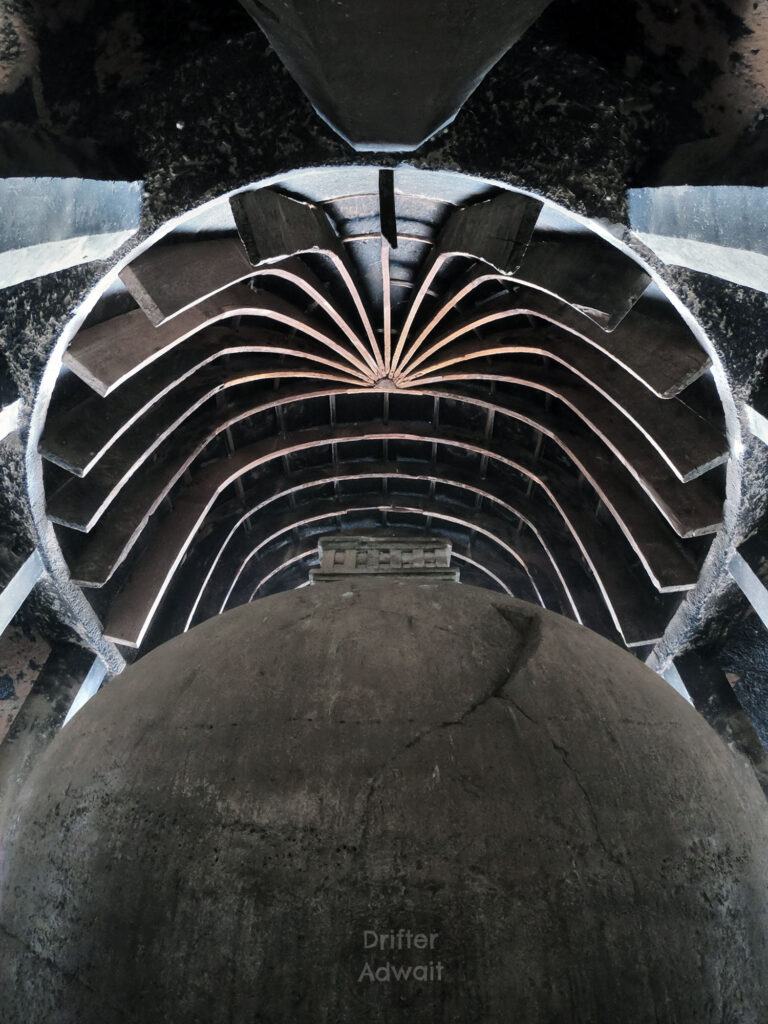
References:
1. Archaeological Survey of Western India. (No X). Inscriptions from the Cave-Temples of Western India: Descriptive Notes, &c. JAS BURGESS, LL.D., M.R.A.S., F.R.G.S., Mem. de la Soc Asiatic Archeological Subnetor and Reporter to Government, & Bhagwanlal Indraji Pandit.
2. Fergusson, J., & Burgess, J. (n.d.). The Cave Temples of India. D.C.L, F.R.S., V.P.R.A.S., F.R.G.S., M.R.A.S., Membre de la Societe Asiatique, etc. Archaeological Surveyor and Reporter to Government, Western India.
3. महाराष्ट्र व गोवे शिलालेख – ताम्रपटांची वर्णनात्मक संदर्भ सूची. (1984). व्यवस्थापक, शासकीय मुद्रणालय व लेखनसामग्री भांडार, कोल्हापूर – ४१६ ००३ यांच्याद्वारे मुद्रित आणि संचालक, शासकीय मुद्रण, लेखनसामग्री व प्रकाशने महाराष्ट्र राज्य, मुंबई – ४०० ००४ यांच्याद्वारे प्रकाशित.
4. लेणी महाराष्ट्राची, प्र के घाणेकर, स्नेहल प्रकाशन, शनिवार पेठ, पुणे ४११०३०, सुधारित आवृत्ती २१ ऑगस्ट २०१६

